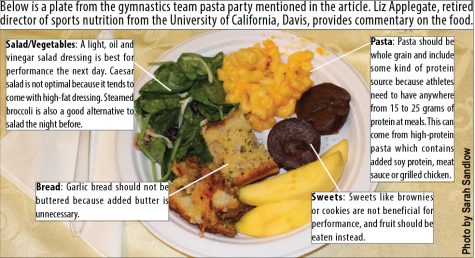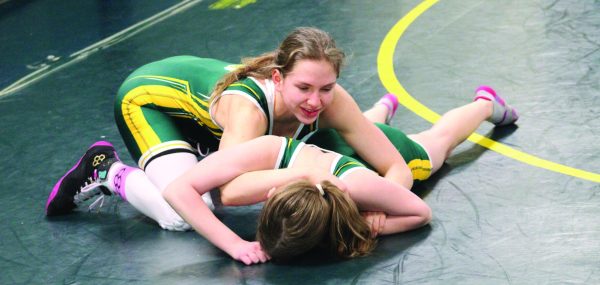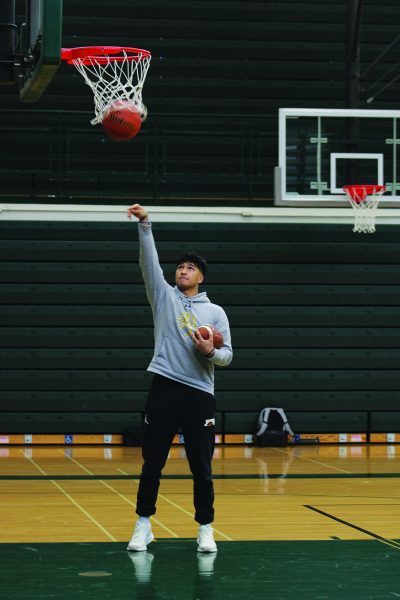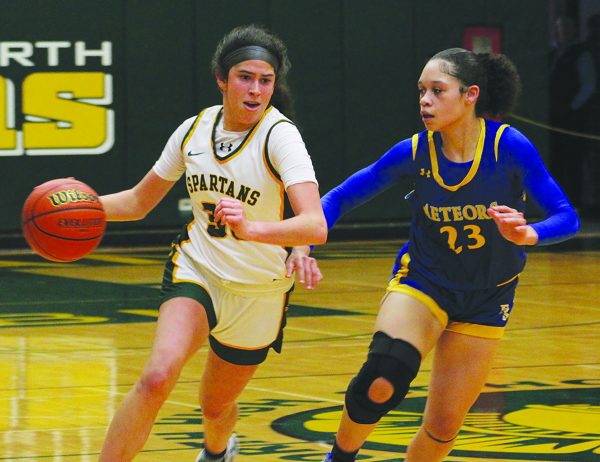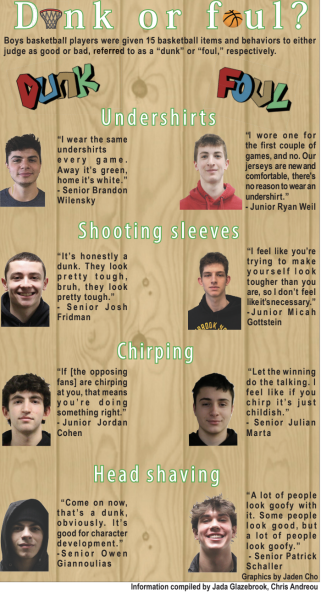Pasta parties may scoop up problems for competition
Wrapped around the counter, filling their flimsy paper plates with pasta, salad and desserts, the members of the girls gymnastics team partake in the custom of “carb-loading” at their pasta party in preparation for competition.
According to senior Bridget Billig, the team has pasta parties before every dual meet, which typically occur once a week. She thinks pasta parties are beneficial because they provide the gymnasts with a good meal the night before their meet.
Pasta parties are common in many Glenbrook North sports and are usually held before invitational events, games or competitions, depending on the sport. A typical pasta party may offer multiple varieties of pasta, salad and fruit, along with various desserts and sports drinks.
Liz Applegate, retired director of sports nutrition for the University of California, Davis, said food at pasta parties that contains healthy carbohydrates is the most beneficial for athletes, as carbohydrates are the most important and preferred energy source for the body. Sports drinks should not be consumed the night before a competition, as they are designed for consumption during performance, but chocolate milk can be beneficial because it contains some carbohydrates and proteins.
When athletes prepare for a competition the night before, they should think about what they need to eat for their specific sport, according to Applegate. Athletes who play high-intensity sports involving short amounts of exercise, like gymnastics, do not require large amounts of food because they must keep their weight consistent. Athletes involved in sports with a more continuous level of exercise, like cross country, should eat enough so that they feel full, but should not overeat in preparation for practice or a game or else they may feel sluggish during competition.
Senior Dana Sullivan said he ate too much dessert at a cross country pasta party the night before a meet and initially did not think much of it. The next day at his meet, however, he felt as if he could not perform to the best of his ability.
“My race was at 8 [a.m.],” said Sullivan. “I just felt like my stomach [felt] awful. I didn’t know what it was, but I just had to assume it was from what I ate the night before.”
Applegate said she advises athletes to stay away from sweets since they do not provide any nutrients that are beneficial to performance. If athletes want to eat something sweet, they should choose fruit over desserts or soda.
Sullivan said he typically eats three plates full of a variety of foods at his pasta parties because he believes carbohydrates are important to runners’ success at meets. He thinks eating foods that contain a lot of carbohydrates, like pasta and bread, helps to improve his performance and energy level the next morning during his race.
According to Applegate, the most important factor in an athlete’s diet is consistency. In order to recover from workouts and prepare for upcoming competitions, athletes must consistently eat healthy to optimize performance by eating at every meal, hydrating well and eating foods like vegetables and whole grains, which contain essential nutrients for the body.
“[Consistency] will pay off quite a bit because your body is getting what it needs to recover, your practices are stronger, you mentally feel more prepared and you’re totally pumped and stoked for your competition,” Applegate said.


